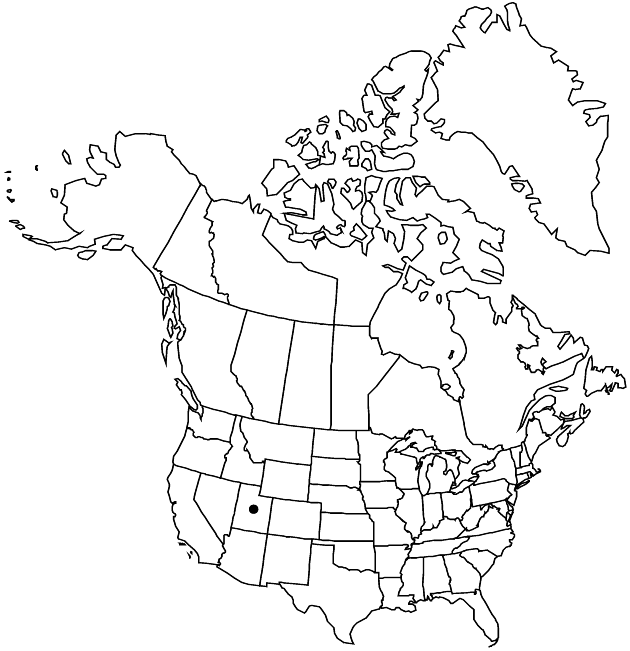Ericameria crispa
Phytologia 68: 152. 1990.
Plants 20–40 cm. Stems erect, green when young, much branched, short-stipitate-glandular. Leaves erect to ascending; blades oblanceolate to spatulate, 15–30 × 3–8 mm, midnerves and 2 smaller collateral veins evident, (margins crisped) apices acute, often apiculate, faces short-stipitate-glandular, resinous. Heads usually in loose, paniculiform or congested, cymiform arrays, sometimes borne singly. Peduncles 5–40 mm (bracts 0–3, reduced, leaflike). Involucres campanulate, 12.5–15 × 5–9 mm. Phyllaries 24–35 in 3–4 series, green to tan, ovate or lanceolate to elliptic, 8–12 × 1–2.5 mm, subequal, outer herbaceous to chartaceous, inner mostly chartaceous, midnerves slightly raised, evident entire length of bodies, (margins ciliate) apices acute to acuminate or cuspidate (outer), appendages slender (outer), abaxial faces glabrous. Ray-florets 0. Disc-florets 14–24; corollas 9.5–10.8 mm. Cypselae tan to reddish, elliptic, 6.5–8.5 mm, sparsely, evenly strigose; pappi usually off-white to brown, sometimes reddish, 8–9.5 mm. 2n = 18.
Phenology: Flowering late summer–fall.
Habitat: On open slopes of weathered soils, with manzanita, fir, pine
Elevation: 2400–3100 m
Discussion
Of conservation concern.
Selected References
None.
Lower Taxa
"fine" is not a number.
